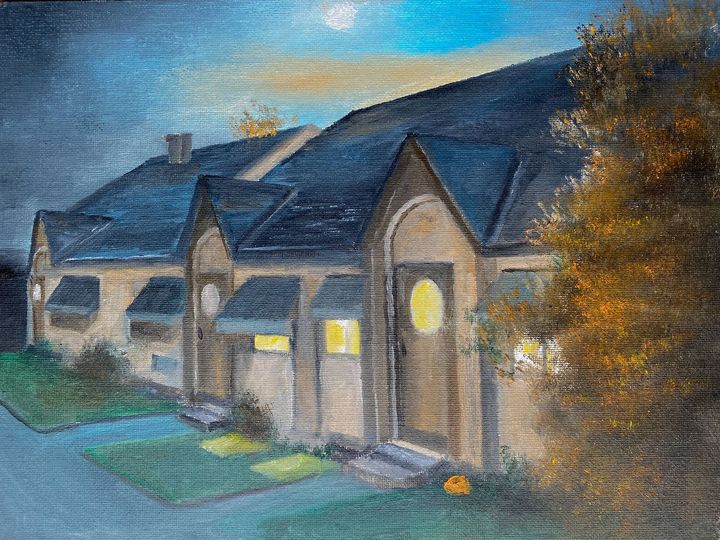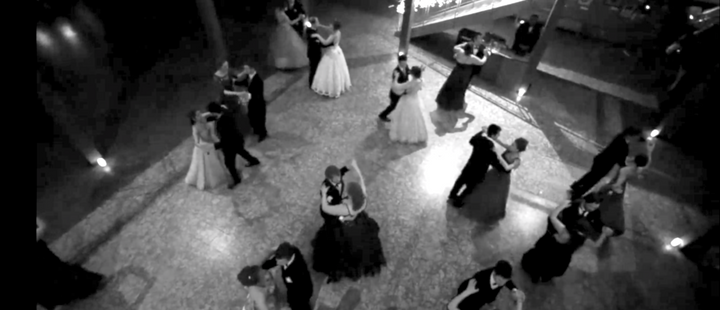Game Review: Legend of the Five Rings

By Lewis Dymer
Kakita Asami of the Crane Clan delicately refilled four teacups: one for each of her Lion Clan hosts, one for her bodyguard, and finally one for herself. How she longed to be a student again, when mastering proper tea-pouring techniques was the greatest of her worries, not whether she could prevent a war between her people and the Lion Clan.
–A Season of War, page 19, L5R Rulebook.
Recommending any new game is as much an exercise in knowing who you are making the recommendation to as it is knowing about the game itself.
Perhaps I believe Tetris is the greatest puzzle game ever, but if you abhor the sight of brightly colored blocks that fit together, there’s not much I’m going to be able to say to convince you to play it. So I generally avoid gushing over games that some might consider “niche”, quiet simply because there’s a good chance that most people just might not be that interested in them.
And then there’s complexity. For example, I chose the subject of my last review, “Kingdomino”, specifically because of its accessibility and ease of play. It’s got some great interaction and strategy, but it’s a fairly light game that allows for socializing and conversation. This makes it an excellent party game, and those tend to be easier to recommend and review simply because they will reach a larger audience.
Enter “Legend of the Five Rings: The Card Game”, produced by FFG (Fantasy Flight Games)… or L5R as it known within it’s circle of devotees. It’s niche. It’s complex. It’s GLORIOUS.
First, it’s niche: L5R is centered around the Samurai culture and way of life in a fictional empire, Rokugan, and the seven Great Clans that make up that Empire. The theme is strong here, as there is an extensive back story for each of the clans, and individual stories for some of the game’s central characters. So if you don’t care for the concept of Bushido, you’ll need to find another reason to like this game (I would argue there are many).
This is actually a new version of the game, as an older L5R CCG (collectible card game) produced by AEG existed for nearly 25 years. During that 25 years, AEG had a wealth of back story, fan fiction, history, generational lineages, etc., all written into the game. How much of that previous history will be used in the new version has yet to be seen.
It’s also niche because of its format; the new L5R is now an “LCG” (living card game). This format is a relatively recent entry into the board gaming world, falling somewhere in between collectible card gaming (Magic, Pokemon, Yugi-Oh!) and standard board games.
It is similar to Magic in that it is a deck-building card game, but it removes the collectible aspect of traditional CCG’s, meaning that it doesn’t require sinking hundreds, if not thousands, of dollars into the game buying randomized “booster packs” to be able to play it competitively beyond your own kitchen table (store or regional tournaments, etc). Instead, if you purchase the base game, you will own a copy of every card that FFG has released to that point!
Eventually, there will be additional monthly expansion packs you can purchase to increase your card base and add to the replayability of the game. As someone whose disposable income has increasingly been soaked up by having a wife, children, a mortgage, and other “adulting” responsibilities, this move away from making the game collectible is greatly appreciated!
However, this indirectly does lead to one of my two critiques of L5R, or at least the way that FFG rolled it out. Although they include 100% of the cards for every Great Clan in a single base box, they don’t include very many duplicates (some of the neutral cards have duplicates). As you expand the game, you can craft your own play decks that can consist of up to three copies of any given card. However, there is only a single copy of most of the main cards in each base set.
While it is absolutely possible to play the game without buying more than one base, you become MUCH more competitive with two or three copies of the game. At $40 per base game, that initial output can seem a bit heavy. But for perspective, some of the newer “hardcore” games that were released at GenCon (board game and nerd extravaganza held every year in August) were easily in the $150 range.
So truthfully, while more copies of cards would’ve been nice, FFG put together a box that allows casually interested players to get their feet wet first, while those of us who KNEW we wanted to dive headfirst into this game had the option of doing just that.
While it may seem odd to discuss one of my criticisms about L5R before I’ve truly begun to gush about it, I figured that was only fair to those who may not want to spend more than $40 on a new game.
While I’m at it, might as well take care of my second criticism: It’s NOT a simple game.
Don’t get me wrong, it’s not a profoundly confusing game by any means. But it definitely takes a little time to learn, and a lot of time to master being competitive at it. You won’t play a game of L5R in 15-30 minutes. It’s more than likely going to take closer to an hour.
But that’s it for my criticisms… on to the gushing!
And there is so much I love about this game! First, I personally do love the Samurai theme, with its Bushido codes of honor; military prowess tempered by political intrigue. As mentioned before, the game centers around the seven Great Clans and the honor that each of them tries to obtain in the Emperor’s eyes. But each Clan has its own ideas as to what honor means.
The Lion, Crab, and Unicorn Clans all excel at military victory, although in drastically different means. The Crane have long been the up-standing political right arm of the Emperor, while the Scorpion counter them as a secretive and deadly Clan, devoted to him… at any cost. The Phoenix and Dragon Clans are fairly balanced between their political and military agendas. While the Dragon pride themselves in craftsmanship and enlightenment, the Phoenix Clan are the masters of the magical and the mystic in Rokugan.
As a I stated earlier, the stories developed in L5R are deep and lush, woven within the personalities of the Clans themselves and spilling out into the constant state of rivalry between the Clans. And as the previous version of this game had a loyal following, the Clans themselves also have very devote followers in the game playing community.
When tournaments are held, people who possibly have never met before show up to band together under the banner of “their” clan to fight against whichever other clans happen to be opposing them at the time. Larger tournaments turn into weekends full of bonding and rallying alongside complete strangers that suddenly become friends! The camaraderie built into this game cannot be matched by any other game I have ever played. The “game release” tournament that FFG held at GENCON for the game before it was even released had 700 people show up to compete! This game practically breeds loyalty in its players.
I feel like I absolutely need to add a brief shout out to the game’s artwork here, as the aesthetics of this game are fantastic! FFG is known for the level of detail and effort they put into their games, crafting them to be more than just visually appealing. “Stunning” isn’t overselling the praise. L5R is no different.
FFG really went all out, and the artwork is truly a pleasure. While not functionally important to the game, I have already had more than one moment where I or an opponent have actually stopped to enjoy the fine artwork on the cards of this game. Look at the cards of the Clan specific champions and strongholds above.
Shiba Tsukune, the Phoenix champion, is captured perfectly in motion as she draws her blade. Mountain’s Anvil Castle, the Dragon stronghold, looks as equally unapproachable as the Crane’s Shizuka Toshi stronghold seems draped in serenity.
At this point, you’re probably wondering if I’m even going to talk about the gameplay. Fine, I shall reward your patience… but not in detail!
As I mentioned, this is not a simple game. You must understand, the rule book is 35 pages long. However, a good portion of that is devoted to explaining the back story and motivations of the Clans in FFG’s attempt to jump-start the emotional buy-in of the players to their chosen Clan.
The game-play is centered around a balance of military and political conflicts. Winning, and even losing occasionally these conflicts (politics and honor, remember?), will grant you access to the use of one of the five elemental rings that the game derives it’s name from.
Primarily, you will attempt to win by “breaking” your opponent’s provinces, which represent their ability to produce characters and structures to support the Clan, with the end goal of defeating their Clan Stronghold. Alternately, because everything is about Bushido, you can also win by accumulating enough honor… or forcing your opponent to lose all theirs. Every Clan starts with its own amount of honor, and this honor can be spent or gained by taking honorable or dishonorable actions throughout the game.
Finally, the basic economics of the game is a mechanic called “fate” that generates every turn and is used to bring your combatants (bushi warriors, sugenja priests, monks, courtesans, etc.) into the field, and can also be utilized to keep them active longer during the game and outfit them with items, weapons, political actions and the like.
I really don’t want to delve much farther into the details of game-play, just because there is so much depth to this game… but let me just say this, Legend of the Five Rings has it all: military might, political prowess, efficient dueling mid-battle, underhanded assassinations, honor, and intrigue. Add in some of the best artwork in a card game I’ve seen yet, the replayability that comes with building your own Clan deck, and the emotional connection you develop with your Clan and its personalities… and you have a game that will become much more than an evening around a table. It will become a game that you will grow with for years.
Players: 2 (… currently. I expect a multiplayer format in the future)
Playing time: 45 – 90 Minutes
Age: 12+
Complexity: Mid-level
Price Point: $40 per base set; $15 per expansion pack
Pros: Multiple ways of winning, variety of tactics
Cons: Spendy for casual gaming
Overall Rating: 8/10




